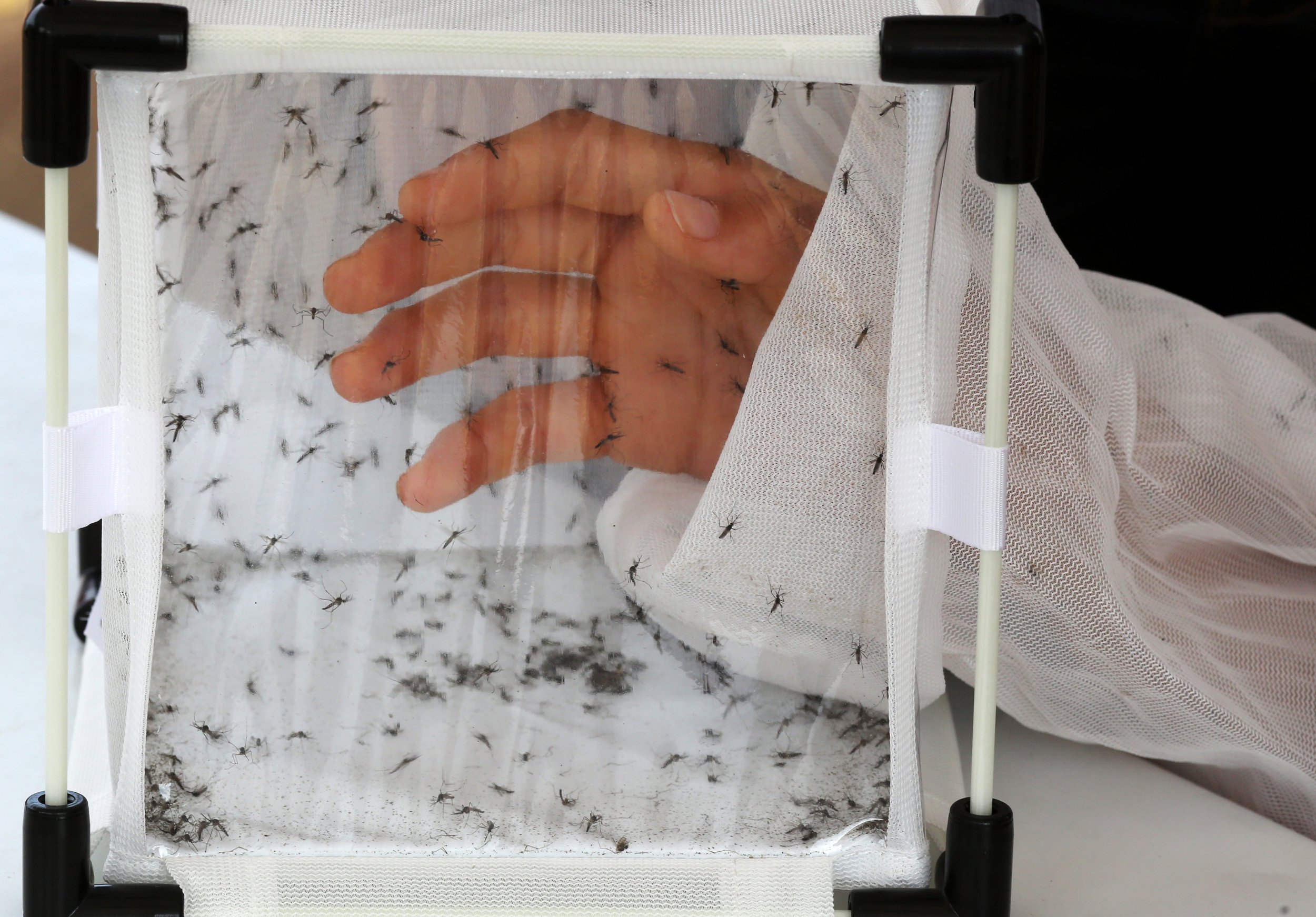
Mosquito-borne ailments are among the most devastatingly successful diseases on earth. Right now, the threat posed by mosquito-borne illnesses—malaria, dengue fever, yellow fever, West Nile virus—is growing at alarming rates.
Even in the United States, where many of these ailments haven't been seen in over 50 years, the danger is menacing. Asian tiger mosquitoes, a carrier of yellow fever, encephalitis and other diseases, have been seen as far north as Chicago. In Key West, Florida, researchers have identified a unique strain of dengue fever, meaning the virus was not recently imported by an unsuspecting tourist but instead has been around long enough to become genetically distinct.
In an attempt to fight back, scientists are now heading down a radically new road: They are breeding the world's first genetically altered insect, a highly specialized form of mosquito, destined to be released into the wild. For better or worse, a line we've been heading toward for quite a long time is finally being crossed.
The modern war against insect-borne disease dates back to 1897, when British scientist Ronald Ross discovered that malaria was spread by mosquitoes. He was also the first to propose reducing or eliminating the world's mosquito population as a way of controlling the disease. But it wasn't until early World War II forays into chemical warfare—leading to the discovery of insecticides ferocious enough to take on the robust bugs—that his idea became a practical reality.
Since that point, the fight against mosquito-vectored ailments has been a chemical battle. Scientists developed drugs that were useful against these diseases and insecticides that were useful against the mosquitoes that transmitted these diseases. For a time, it looked as if we were winning this fight. Unfortunately, in the past 30 years, the rules have changed. Mother Nature interceded and evolution occurred. We're now fighting insects that are resistant to our pesticides and diseases that are resistant to our drugs.
To address these concerns, during the past 15 years, scientists have been trying to move beyond the chemical paradigm and toward a genetic one. The dream has been to build a transgenic mosquito, an insect genetically modified so as to be unable to transmit illness. This new insect would then be introduced in the wild, ideally supplanting disease carriers with a harmless imposter. Seven teams, some in the States, others in Europe, have been working on the project, and that work is nearing fruition.
Thanks to the past decade and a half of research, it is now possible to walk into any number of molecular biology labs and peer through a microscope at a mosquito unlike any other in history. The magnified insect shows a feature not found in the wild: a pair of bright, fluorescent green eyes, the telltale sign of successful genetic modification. These eyes are proof that one of the most scientifically advanced cures for disease ever conceived is feasible.
Yet, even if we can outfox evolution by successfully breeding transgenic mosquitoes and find a way to completely kill malaria in the lab, researchers still need to make this work in the real world. The lab-created mosquitoes have the same life span and produce the same number of offspring as normal mosquitoes, but to truly begin to control the disease we need to figure out how to get them to produce more offspring.
This isn't the only issue. Containment has become an even greater concern. As there's no way to build transgenics with a human form of malaria immunity without first breeding insects with the human form of malaria, much of this work has been moved to Level-3 bio-containment facilities, the kind that come with electronic passkeys, multiple airlocks and drainage systems that dump wastewater into a heating chamber that boils off any remnant of disease. That said, as the last Ebola outbreak made clear, even the most rigorous of safety measures don't always do their job.
Even if this containment strategy works, there are potentially more serious concerns about what happens when these insects are deployed in the wild, including the evolution of a Frankenstein mosquito carrying super-malaria. "There's just no way to know exactly what will happen in 10,000 generations of mosquitoes," says Peter Atkinson, an entomologist at the University of California, Riverside, and one of the scientists leading the quest for transgenic mosquitoes. But, it appears, we are about to find out.
One thing is for certain. Very soon, an even stranger line will be crossed, as, for the first time in history, a creature birthed in our imagination will take up residence in reality.
Steven Kotler is a best-selling author—most recently of Tomorrowland: Our Journey From Science Fiction to Science Fact—and director of research for the Flow Genome Project.
Uncommon Knowledge
Newsweek is committed to challenging conventional wisdom and finding connections in the search for common ground.
Newsweek is committed to challenging conventional wisdom and finding connections in the search for common ground.
About the writer
To read how Newsweek uses AI as a newsroom tool, Click here.








